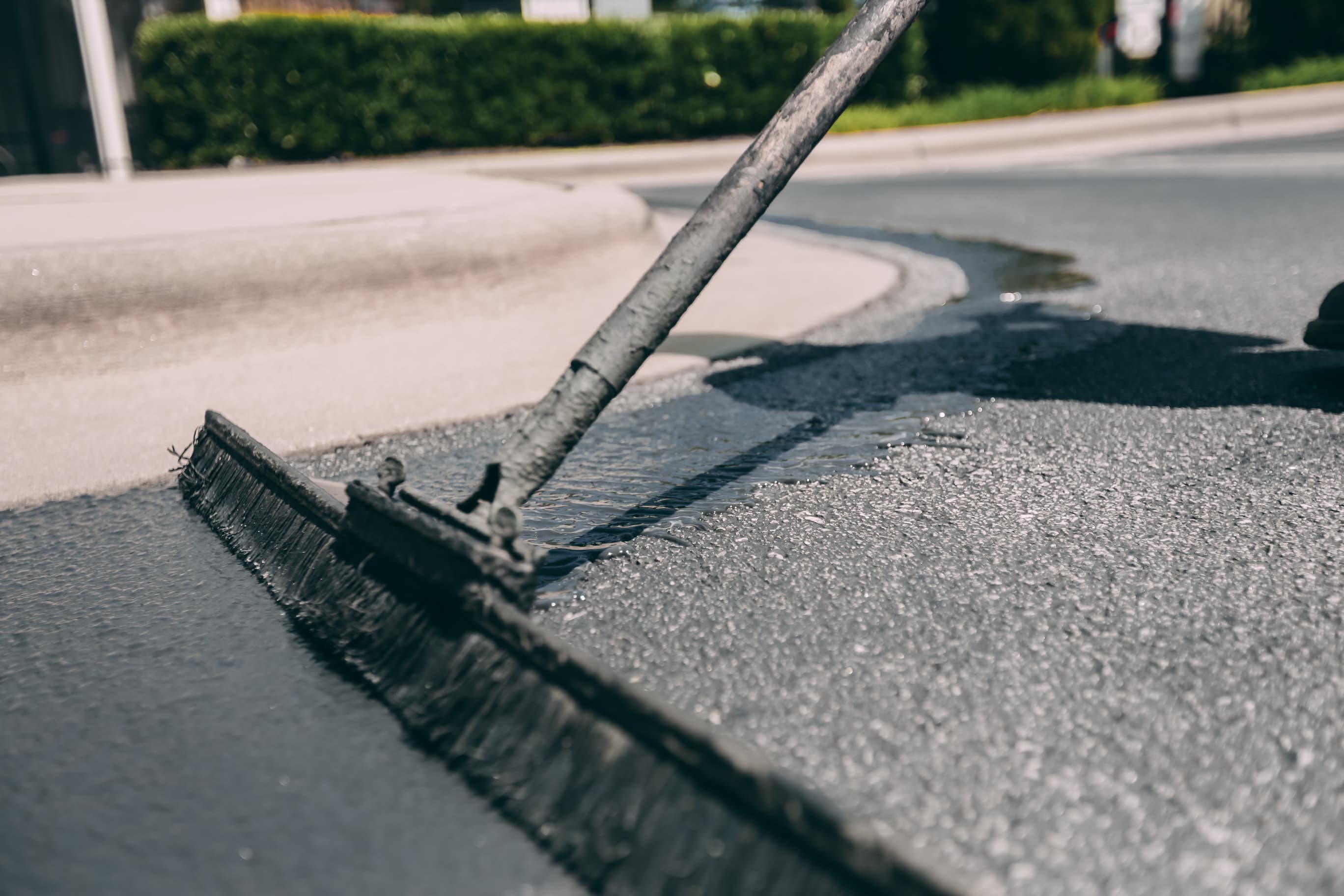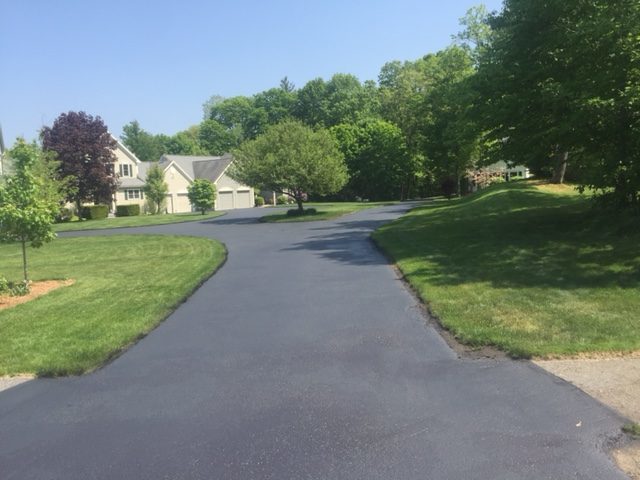Enhance Toughness: Hot Mix Asphalt Sealing for Angled Parking Structures
Enhance Toughness: Hot Mix Asphalt Sealing for Angled Parking Structures
Blog Article
Warm Mix Asphalt: A Sustainable Solution for Sidewalk
Hot Mix Asphalt (HMA) has actually emerged as a leading lasting selection for sidewalk options, using a myriad of ingenious technologies and environmental advantages. As the demand for environment-friendly building techniques grows, checking out the nuances of HMA's sustainability can give beneficial insights right into the future of sidewalk options.
Environmental Benefits of Hot Mix Asphalt

Moreover, Warm Mix Asphalt aids to minimize urban heat island impacts. Its dark shade soaks up sunshine, minimizing the quantity of heat mirrored back into the environment compared to lighter-colored sidewalks. This can decrease ambient temperature levels in metropolitan areas, lowering the need for cooling and eventually lowering energy consumption.
On top of that, Warm Mix Asphalt adds to improved stormwater management. Its porous nature enables water to infiltrate the sidewalk and reenergize groundwater materials, decreasing runoff and the threat of flooding. These ecological advantages make Warm Mix Asphalt a lasting selection for leading highways and roads.
Energy Effectiveness in HMA Manufacturing
Is power performance a crucial variable in the manufacturing of Warm Mix Asphalt (HMA)? Absolutely. Energy plays a significant function in the production of HMA, influencing both price and ecological sustainability. One key element of energy performance in HMA production is using warm mix asphalt (WMA) innovations (regrading). WMA enables the mixing and positioning of asphalt at lower temperature levels contrasted to typical hot mix asphalt, leading to minimized energy consumption during manufacturing. This procedure not just reduces fuel usage however additionally lowers greenhouse gas discharges, making it a more environmentally pleasant choice.
Additionally, advancements in plant modern technologies have actually led to more energy-efficient HMA production processes. By maximizing power use in HMA production, the sector can lower its carbon footprint while keeping premium sidewalk materials.
Recyclability of Warm Mix Asphalt
The recyclability of Warm Mix Asphalt (HMA) is a pivotal aspect of its sustainability and lasting ecological influence. HMA is just one of the most recycled products in the USA, with over 100 million tons of reclaimed asphalt sidewalk (RAP) being recycled annually in brand-new sidewalk building. Reusing HMA offers several ecological benefits, such as lowering the demand for virgin materials, lowering energy intake during manufacturing, and decreasing the amount of waste sent out to landfills.
The procedure of recycling HMA involves crushing the existing pavement, crushing it into smaller sized pieces, and mixing it with new aggregate and asphalt binder to develop a recycled mix. Overall, the recyclability of HMA plays a considerable function in advertising lasting practices within the sidewalk industry.

Long-Term Performance of HMA
Asphalt sidewalks show durability and durability over an extensive duration, mirroring the long-term performance of Hot Mix Asphalt (HMA) The longevity of HMA can be credited to its capacity to hold up against heavy website traffic tons, harsh weather condition conditions, and the impacts of aging. Researches have actually shown that over here well-designed and properly built HMA pavements can last for twenty years or even more with normal upkeep. The trick to maximizing the long-lasting performance of HMA depends on utilizing top quality products, adhering to best practices in building and construction, and implementing effective upkeep strategies. Proper water drainage, regular assessments, and timely repairs are necessary for maintaining the architectural honesty of HMA sidewalks over time. Furthermore, improvements in HMA innovation, such as the usage of polymer-modified binders and warm mix asphalt, have better boosted the resilience and longevity of HMA pavements. By focusing on high quality construction and maintenance techniques, HMA remains to confirm itself as a economical and lasting service for durable pavement facilities.

HMA: Sturdiness and Sustainability
Demonstrating both toughness and sustainability, Hot Mix Asphalt (HMA) has become a foundation in the building and construction of durable pavement frameworks - angled parking. HMA's durability comes from its ability to hold up against hefty loads, rough climate condition, and high web traffic quantities, making it a reputable option for highways, highways, and airport terminal runways. The make-up of HMA, which normally includes aggregates, binder, and filler, plays an important function in boosting its read this longevity and resistance to tear and wear
Furthermore, HMA's sustainability exists in its recyclability and energy-efficient production process. The capacity to reuse recovered asphalt sidewalk (RAP) in new HMA mixtures decreases the need for virgin products and decreases the ecological influence of sidewalk construction and maintenance. Furthermore, the energy efficiency of creating HMA lies in its lower mixing temperatures contrasted to other pavement materials, leading to minimized power intake and greenhouse gas exhausts.
Verdict
In final thought, warm mix asphalt (HMA) supplies a sustainable option for sidewalk with its ecologically pleasant characteristics. HMA's recyclability, power effectiveness in manufacturing, and lasting resilience make it an environment-friendly option for road building.
HMA is one of the most recycled materials in the United States, with over 100 million bunches of recovered asphalt pavement (RAP) being recycled yearly in new sidewalk building.The process of reusing HMA includes milling the existing sidewalk, squashing it right into smaller sized pieces, Read More Here and blending it with brand-new accumulation and asphalt binder to develop a recycled mix.Asphalt pavements demonstrate durability and resilience over an extensive duration, mirroring the long-term efficiency of Warm Mix Asphalt (HMA) Additionally, developments in HMA innovation, such as the use of polymer-modified binders and warm mix asphalt, have further improved the resilience and durability of HMA pavements. The capacity to recycle redeemed asphalt pavement (RAP) in brand-new HMA mixes decreases the demand for virgin materials and reduces the environmental impact of sidewalk building and construction and maintenance.
Report this page